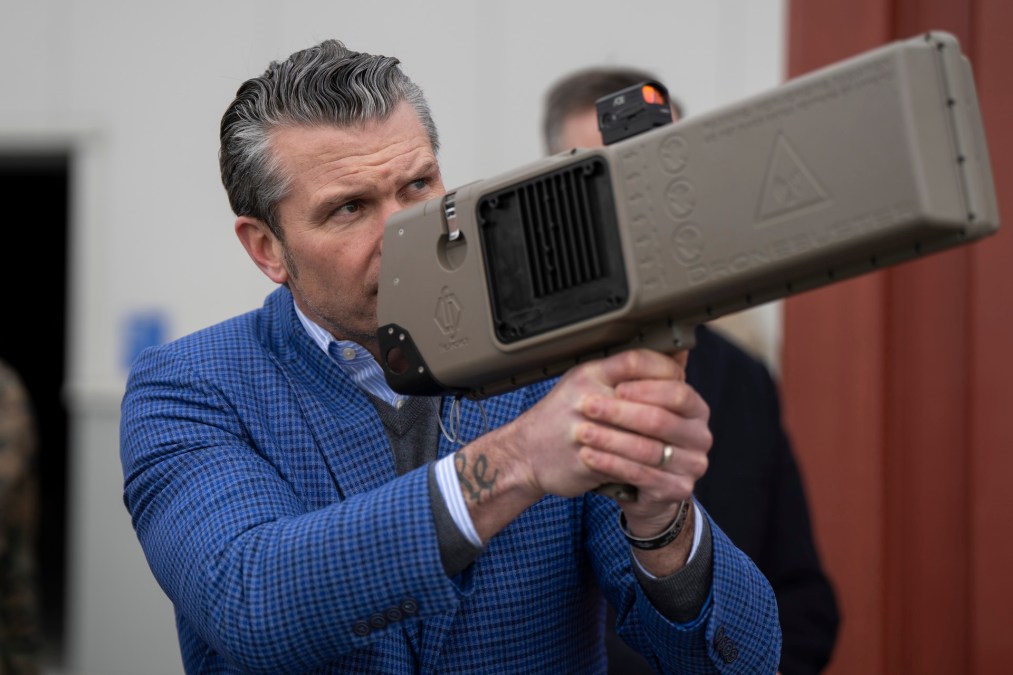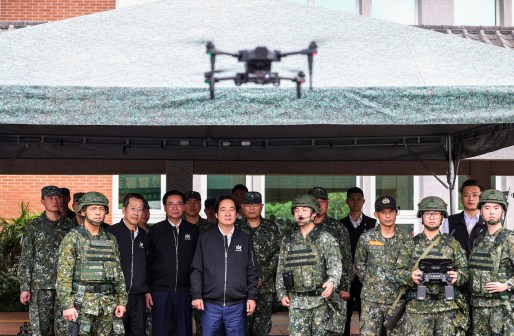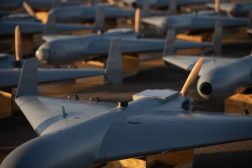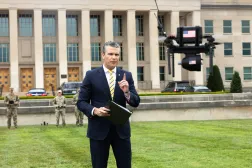Hegseth orders Army secretary to create new joint interagency counter-drone task force

Secretary of Defense Pete Hegseth on Thursday announced that he’s directed the establishment of a new task force to serve as the Pentagon’s lead organization for developing capabilities to defeat small drones.
The new organization, dubbed Joint Interagency Task Force 401 (JIATF 401), will be formally stood up by Army Secretary Dan Driscoll, Hegseth said in a video posted on X.
The existing Joint Counter-small Unmanned Aircraft Systems Office, or JCO, will be disestablished, according to a new memo from Hegseth.
The creation of JIATF 401 and elimination of the JCO will “better align authorities and resources to rapidly deliver” counter-small UAS capabilities to America’s warfighters, Hegseth wrote in his directive to Pentagon leadership.
The task force will report to Deputy Secretary of Defense Stephen Feinberg.
“My priorities for transformation and acquisition reform include improving C-sUAS mobility and affordability and integrating capabilities into warfighter formations. DoD must focus on speed over process by disestablishing the JCO and establishing JIATF 401 with expanded authorities to execute capability development and delivery timelines that outpace the threat,” Hegseth wrote.
The move comes amid growing concerns by Defense Department leaders about the threats posed by adversary UAS overseas as well as in the homeland.
“Our job here at the Pentagon, when you think about it, is to prepare for the threats of the future and build a force to match them and defeat them and outpace them. And there’s no doubt that the threats we face today from hostile drones grow by the day. Emerging technologies — we see it in battlefields in far flung places, and we see it on our own border in small unmanned aerial systems. UAS can serve the target and bring harm on our warfighters, our people, our bases, and frankly, the sovereignty of our national airspace,” Hegseth said in the video posted on X.
The new entity will consist of a “unified team that’s going to bring together our best talent from all our agencies to counter these threats and restore control of our skies,” he said, adding that the Pentagon will be consolidating resources and empowering the task force with the “utmost authority” to push forward with counter-UAS innovations.
The capabilities supported by the team will help protect American airspace and troops overseas, he suggested.
“It’s going to put the right tools in the hands of our warfighters, defend that sovereignty and send a clear message to the world that the United States will never be outmatched,” Hegseth added.
Driscoll has been tasked to deliver an implementation plan within 30 days that lays out the required resources, structure and authorities to enable the task force to execute “at speed and scale,” and addresses acquisition authority, procurement authority, a “Joint Program Executive Office-like structure,” and flexible funding.
Per Hegseth’s directive, all DOD-wide counter-small UAS research, development, test and evaluation efforts and resources are to be consolidated under the new task force, except for military service-specific and U.S. Special Operations Command program-of-record development activities.
The memo notes that resources for the Pentagon’s Replicator-related counter-drone efforts will be consolidated under the new organization.
The task force director will be able to approve up to $50 million in funding per effort for counter-drone initiatives, according to the memo.
The fiscal 2027 budget request is expected to include “sufficient RDT&E, procurement, and [operation and maintenance] funding to put solutions in the hands of our warfighters faster and ensure funding for JIATF 401 is appropriately balanced,” Hegseth wrote.
Pentagon Chief Technology Officer Emil Michael has also been tasked with making recommendations to establish a dedicated counter-small UAS test and training range within 30 days.






